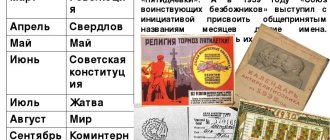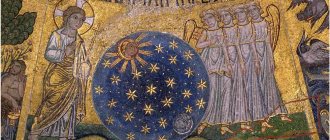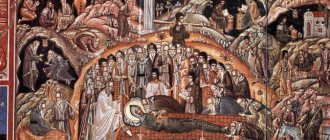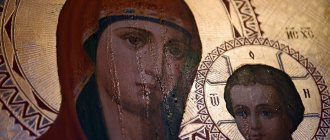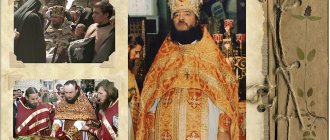In this article we will study the eras of our Earth.
The concept of “era” has a double meaning: religious, which has long become universal and acquired a chronological, and in some way, historical meaning; and geological, characterizing periods of development of life on the planet. The Earth Eras represent the division into large time periods between noteworthy events occurring in the history of our planet.
The interpretation of this word is also different. In one case it is believed that it comes from the Latin phrase “single number”, in the other - from a combination of the first letters of the phrase “beginning of the reign of Augustus”. Be that as it may, the concept of “era” is a countdown of time from some important event in the development of our earth until its end.
The first calendars
The process of human evolution created the need to organize dates and times.
The ancient farmer needed to know as accurately as possible what time it was best for him to sow seeds, and the nomadic livestock breeder needed to know when to move to other territories in order to have time to provide his livestock with food. This is how the very first calendars began to appear.
And they were based on observations of celestial bodies and nature. Different peoples had different time calendars. For example, the Romans counted their chronology from the founding of Rome - from 753 BC, while the Egyptians - from the first moment of the reign of each of the pharaonic dynasties. Many religions also created their own calendars. For example, in Islam, a new era begins with the year in which the prophet Muhammad was born.
Julian and Gregorian calendars
In 45 BC, Gaius Julius Caesar founded his calendar. In it, the year began on the first of January and lasted twelve months. This calendar was called the Julian calendar.
The one we use today was introduced in 1582 by Pope Gregory the Twelfth. He managed to eliminate some significant inaccuracies that had accumulated since the first Ecumenical Council. At that time they were as much as ten days. The difference between the Julian and Gregorian calendars increases by about a day every century, and today it is already thirteen days.
In history, chronology always plays a big role. After all, it is important to imagine in what period of time a significant event in the life of mankind took place, be it the creation of the first tools or the beginning of the Hundred Years War. They say that history without dates is like mathematics without numbers.
Religious form of chronology
Since the beginning of our era is calculated from the year considered the date of the birth of Jesus, in the religious version the corresponding entry is often used: from the Nativity of Christ and before it. There is still no completely accurate historical data about when life appeared on our planet. And only based on religious and historical artifacts can scientists make conclusions about when approximately this or that event occurred. In this case, the years BC are indicated in chronological reverse order.
When did our era begin?
When did our era begin?
There are two questions that we ask ourselves every year on the eve of Christmas. First: why is His birthday celebrated on this day and not on any other? On this score, atheists have an explanation related to the fact that the church, knowing about the custom of almost all nations to celebrate the day of the winter Solstice, without further ado, set the date of the birth of Christ on the day from which the night becomes shorter. And she gave the event a special symbolic meaning, when nature itself welcomes the birth of the Savior. A different point of view was held by Saint John Chrysostom and Blessed Augustine, who turned to the Holy Scriptures, according to which the day and month of the death of Jesus Christ are precisely known - March 30.
The Church believed that Christ was on Earth for the full number of years, as a perfect number. It is not difficult to realize that the virgin birth of Christ happened on the same day on which he was crucified. Counting the traditional 9 months from this day, we get the date December 25th.
The second question, concerning the exact year of Jesus' birth, is not so easily resolved.
The Pskov Diocesan Gazette for 1911 published an interesting article by Hieromonk Innocent, in which the author expresses his point of view on the chronology of some events from the life of Jesus Christ. The text has been changed in accordance with modern rules of the Russian language.
“Historians and many fathers and teachers of the Church recognize as undeniable the fact that “the true year of the birth of Christ warns our era by several years.” Considering the narration of the evangelists Luke and Matthew about the birth of Jesus Christ, they determine that the birth of I. Christ was “between 9 and 6 AD.” According to the tradition of the Greek-Russian Church, our Lord Jesus Christ was born in the year 5500 from the creation of the world, that is, according to our civil reckoning, at the end of 5499. If we count 5508 years from the creation of the world BC (as is customary in our country), then it is necessary to recognize the difference between the true year of the Nativity of Christ and the beginning of our era, that is, Jesus Christ was born 9 years BC.
Christ was crucified in 5533, that is, in the year 25 AD, and it was in this year that Good Friday comes out on March 30th. It is known that the Savior died and rose again at the 34th year of his life. And this confirms our conclusion about the time of His birth: 9 years BC, for 34-25 = 9.”
If we accept the point of view of the Pskov hieromonk Innocent as corresponding to historical facts, then we have already been living in the new millennium from the Nativity of Christ for several years. What will be the next argument in a discussion that has not ceased for centuries?
Gold, incense and peace
Following the shepherds, the Magi came to the cave to the manger where the baby lay to worship Christ. Their names are Balthazar, Caspar, Melchior. They are often called the Eastern kings. At home, they ruled cities, studied the starry sky and the flow of stars. They knew the legend of the ancient sorcerer and astrologer Valaam about the appearance of a special star in the sky before the birth of the Savior of the world on Earth. A few months before Christmas, they noticed an unusual star in the sky. Having seen the prophecy of Balaam in the sign, they decided to verify this personally and worship the Savior. According to legend, they left three different cities without prior agreement with each other, met on the way and, guided by a star, set off together to Palestine.
Following the star, the wise men left Jerusalem and reached the outskirts of Bethlehem. Here the star stopped over the cave, entering which the Magi saw the Baby in a manger, bowed to him and the Most Pure Virgin, leaving their gifts: gold - as the King of Ages, incense (the resin of fragrant plants, which was incense before God) - as God, myrrh (funeral incense in the form of oil, which was used to anoint the body of the deceased) - as a mortal person and at the same time immortal.
And now in European countries there is a custom: after the Divine Liturgy on the day of Epiphany, parishioners take out specially blessed multi-colored crayons to write the first letters of their names on the doors of their houses: K+M+B, welcome. And the relics of the Magi are kept in the famous Cologne Cathedral.
In legends, the first pilgrims to Christ are called differently. Who were they really? Stargazers, magicians, kings? How many were there? The number of gifts is three. And this number is explained in different ways - the Trinity, three ages of life, three earthly races? Did they come from the same country or from different ones? They are also called the first Christian martyrs. According to legend, not only 14 thousand babies were killed by order of King Herod, but the Magi also fell victims to his hatred.
There is another legend, not without conviction: the gifts of the Magi are today kept in the monastery of St. Apostle Paul on Mount Athos. The gold is in the form of 28 small plates (5 centimeters by 7 centimeters) of various shapes (polygons, quadrangles, trapezoids). The surface of each is covered with the finest filigree ornament, which is never repeated. Frankincense and myrrh were preserved in the form of approximately 70 balls the size of an olive. According to ancient church tradition, the Blessed Virgin Mary, shortly before her Assumption, handed over the gifts of the Magi, along with her belt and robe, to the Jerusalem Church, where they were kept until the year 400. Then they were transferred to Constantinople until the city was captured by the Turks in 1453. After the fall of Byzantium, the widow of Sultan Amurat and the mother of the conqueror of the East Mohammed II, Maria, saved the shrines from the infidels and personally brought them to the monastery of St. Paul on Athos. The archives of the monastery still contain the Sultan’s letter confirming the transfer of the gifts of the Magi to the Athonite monks.
It is in memory of these holy gifts that it is customary to give gifts at Christmas.
Waiting for the first star
What was it like 300 years ago? Christmas Eve is the evening before Christmas. Bonfires are lit in Russian villages. Each family goes out into the yard and stands in silence around the blazing fire. It was believed that on this night the deceased ancestors came to warm themselves by the fire. With a new fire, which the old people carved out with flint in the evenings, they set fire to an oak log and with this smoke they fumigated the home from evil spirits.
They certainly washed in baths, in ovens, and put on clean shirts. The women washed all the dishes and threw away the damaged ones. They washed the floors, tidied up the hut, the stable, and the barn. The table was covered with a “Christian” white tablecloth, and hay and straw were placed under it in memory of the manger where the Baby was laid. A sheaf of unthreshed rye was placed under the image.
Finally, the first star lit up - it reminded of the one that led the Magi to Jesus. The father of the family went out into the hallway and shouted at the top of his lungs: “Frost, frost! Go to the house and eat kutya. Walk in winter, and lie under a log in summer!” This was supposed to appease the frost so that in the spring it would not destroy the seedlings.
The main celebration took place in the morning. Pancakes and kruzhalo were served at the table - a sweet pie in the shape of a ring with rays. Both the pancakes and the circle symbolized the Sun. Figures of cows, sheep, and other domestic animals were made from dough. Such cookies were called differently: “cows”, “kozulki”, “kolitki”. They were placed on the festive table, on the windows, and generously presented to everyone who entered the house on these days. They were stored until Epiphany, then soaked in water and fed to cattle. This was supposed to protect livestock from disease.
Pork occupied the main place on the Christmas table in Russia. Even among peasants in the Pskov region, Christmas was celebrated for at least 2-3 days, usually with family. The hostess prepared the table: they cooked meat soup, roast meat, jellied meat, baked pies and flatbreads with potatoes, cottage cheese, and mushrooms. The ritual food was kutia (or kolivo, or sochivo) and pancakes.
In the Pskov region, the Western tradition of staging puppet shows at Christmas, which were performed by puppeteers in a portable theater box - nativity scene, became widespread. Theatrical action was divided into two parts: secular and religious. In contrast to the Western European version, which goes back to religious mysteries, among the Eastern Slavs most of the performance in the nativity scene was devoted to everyday scenes from folk life; gospel stories were less popular.
What a joy!
Christmas is a holiday in which piety and feast revelry are combined in a whimsical way, but with the spiritual generosity and sincerity characteristic of the Russian people. The religious basis could not influence the folk traditions, legends and customs that existed in pre-Christian times. For many centuries now, Russia has been celebrating two holidays: one in church, the other in the family and on the street. One with prayer and kneeling, the other with carols and Christmas round dances.
At Christmas time they were engaged in something that Orthodoxy was strict about, considering it a sin - all kinds of fortune-telling. They were in a hurry to find out their fate, to find out what, in general, they were not supposed to know. It was believed that those who wondered about the future risked encountering unearthly evil spirits. But at Christmas time the risk becomes much less, since on holy days from Christmas to Epiphany a person is under the protection of heaven.
In the old days, Russian people always wore a belt under their clothes - as an ancient amulet against evil spirits, a symbol of a protective circle, and their forehead was covered with a bandage. Neither the bandage nor the belt was removed even in the bathhouse. But when deciding to do fortune-telling, they took off the cross and belt. This is how the young maidens opened up to an unknown, terrible force.
For fortune telling, they usually chose a bathhouse - the only room where there were no icons. In the bathhouse they sat in front of the mirror, placing candles on both sides, and peered into the mysterious darkness to see who would appear there. It happened that either from close attention, or from ordinary fear, they fainted.
They told fortunes on wax, on lead, and threw rings, rings, and earrings into the water. It was no longer so scary: they often wondered after noisy entertainment, in a large group.
They sang sub-dish songs. Water was brought to the hut, and this was done by the first-born boy and the girl who was born last in the family. While they walked through the water, scooped it up and carried it to the hut, it was impossible to talk. A wide and deep dish of water was placed on the table, rings, thimbles and other small personal items were thrown into it, and the dish was covered with a scarf. Then they sang a song with ritual words and for each verse they took out one thing. The sung prediction was reinforced with the words: “Whoever gets it, it will come true.”
According to tradition, Christmastide is not complete without bonfires. They burned a Yuletide log prepared ahead of time. When lighting such a Yuletide log, they noted: if it goes out before Epiphany evening, expect misfortune. The ashes from the log were collected and taken out to the field for a successful harvest. Ashes were used to treat toothache; collected in a box and tidied up in the hut, it protected against fire and thieves.
Another custom that has survived to this day was included in the obligatory program of Christmas evenings: scary stories, but certainly with a happy ending.
The editors would like to thank N. Dubrovskaya and L. Vorontsova for information support in the preparation of materials.
In the photo: This is what the nativity scene looks like, created by specialists from the decorative and applied arts department of the Pskov Museum-Reserve.
Zero year
The mention of the division between the time before and after the birth of Christ is associated with a calculation in astronomical notation made according to the integer numbers on the coordinate axis. Year zero is not commonly used in either religious or secular notations. But it is very common in astronomical notation and in ISO 8601, an international standard issued by an organization such as the International Organization for Standardization. It describes the format of dates and times and provides guidelines for their use in an international context.
Countdown
The concept of “BC” became widespread in chronology after its use by the Venerable Bede, a Benedictine monk. He wrote about it in one of his treatises. And starting from 731, the calculation of time was divided into two periods: before our era and after it. Gradually, almost all countries in Western Europe began to switch to this calendar. The most recent of them was Portugal. This happened on August 22, 1422. Until January 1, 1700, Russia used the chronological calculation of the Constantinople era. The Christian era “from the creation of the world” was taken as the starting point. By and large, many eras were based on the relationship between the “days of the creation of the world” and the entire duration of its existence. And Constantinople was created under Constantius, and its chronology was carried out from the first of September 5509 BC. However, since this emperor was not a “consistent Christian,” his name, and at the same time the countdown he compiled, are reluctantly mentioned.
Prehistoric and historical eras
History is prehistoric and historical eras. The first of them begins with the appearance of the first person, and ends when writing appeared. The prehistoric era is divided into several time periods. The basis for their classification is archaeological finds. These materials, from which people before our era made tools, the period when they used them, formed the basis for recreating not only the time frame, but also the names of the stages of the prehistoric era.
The historical era consists of the periods of Antiquity and the Middle Ages, as well as New and Modern times. In different countries they occurred at different times, so scientists are not able to determine their exact time frame.
Eras of the Earth and the Cenozoic revolution
The geological history and eras of the Earth end with the Cenozoic or “new life”.
The Cenozoic Era is the current era of new life, lasting 67 million years. It is divided into three periods:
- Paleogene (66-23 million) - characterized by an exuberant flourishing of mammals, the appearance of tailed lemurs and insects, as well as flowering plants. It is worth highlighting new niches of marsupials, oviparous animals, cetaceans, as well as cuttlefish, octopuses and squids;
- Neogene (23-2.58 million) - the animal and plant world is changing again, a new wave of extinction is taking place. But many classes of predatory, equid, and proboscis animals are still preserved. The period is also highlighted by a new development in the diversity of mammals and birds;
- Anthropocene (2.58 million to the present day) - the period of the appearance of humans and modern vegetation. It is also called the Quaternary period. The first eras were characterized by frequent changes in temperature changes. During this period, mammoths, cave deer and bears die, as well as Neanderthals, who could not withstand the competition of the Cro-Magnons. The second half of the period is characterized by warming and the extinction of large animal species.
New life!
As you can see, the eras of the Earth and its chronological biography are extremely interesting information that is definitely worth and useful to know!
Beginning of our era
It is well known that the new era at the very beginning was not calculated by a continuous count of years, for example, from the first year to, say, the current one. Its chronology began much later, with the date of the Nativity of Christ. It is believed that it was first calculated by a Roman monk named Dionysius the Lesser in the sixth century, that is, more than five hundred years after the dated event. To get the result, Dionysius first counted the date of the Resurrection of Christ, based on church tradition that the Son of God was crucified in the thirty-first year of his life.
The date of his Resurrection, according to the Roman monk, is the twenty-fifth of March 5539 according to the chronology “from Adam”, and the year of the Nativity of Christ, therefore, became 5508 according to the Byzantine era. It must be said that Dionysius’ calculations raised doubts in the West until the fifteenth century. In Byzantium itself they were never recognized as canonical.
Eras of the Earth - Proterozoic and its characteristics
All eras of the Earth are divided into periods, which characterize them in general. After all, one cannot describe the millionth century in one word!
- The Proterozoic era is an ancient era that stands out for the longest period! It covered the time period from 2500 to 541 million years ago! Of course, during this stage there were many variable events - for example, the oxygen revolution occurred. The planet began to receive sunlight, but not yet its warmth. The world ocean was born and the cores of lithospheres - granitoid domes - were formed. They were originally shaped like ovals with a diameter of 100 km. The era is also characterized by the appearance of the first invertebrates, prenuclear prokaryotes, fungi and sponges, as well as unicellular algae. It is believed that at this stage reserves of iron, copper and tin ore, as well as gold-uranium-pyrite conglomerates, were formed.
Important: Until 2.4 billion years ago, there was no oxygen in the atmospheric cloud - it was a heavy mixture of ammonia, methane, hydrogen sulfide and carbon dioxide. At this geological stage, oxygen took its share in the Earth's air.
Characteristic
- It is also worth noting that in this era, in the Ryasian (Riasian) period, nuclei begin to appear in the single-celled inhabitants of the planet. But the next one is Orosirium, which is responsible for the oxygen enrichment of the earth. Also at this stage, a copper-nickel reserve and the largest crater, Vredefort, as a result of the impact of an asteroid.
- The Calimian period is responsible for the expansion of our continental plates. The Stenian period is already distinguished by life forms that began to reproduce sexually. During this era, supercontinents were created and broken up, forming our earth. The last period - Ediacaran already had multicellular soft forms of life (vendobionts).
Earth eras and their characteristics
History BC
From the seventh to the third millennium BC, the planet experienced the Neolithic era - the period of transition from the appropriating form of economy, namely hunting and gathering, to the producing one - agriculture and cattle breeding. Weaving, grinding of stone tools and pottery appeared at this time.
The end of the fourth - the beginning of the first millennium BC: the Bronze Age reigns on the planet. Metal and bronze weapons became widespread, and nomadic cattle breeders appeared. The Bronze Age gave way to the Iron Age. At this time, the first and second dynasties ruled in Egypt, uniting the country into a single centralized state.
In 2850-2450 BC. e. The economic rise of the Sumerian civilization began. From 2800 to 1100, the Aegean, or culture of Ancient Greece, rises. Almost at the same time, the Indus civilization arose in the Indus Valley, and the kingdom of Troy reached its peak.
Around 1190 BC e. The powerful Hittite state collapsed. Almost four decades later, the Elamite king captured Babylonia, and the height of his power began.
In 1126-1105 BC. e. The reign of the Babylonian ruler Nebuchadnezzar began. In 331, the first state was formed in the Caucasus. In 327 BC. e. The Indian company of Alexander the Great took place. During this period, many events took place, including the slave uprising in Sicily, the Allied War, the Mithridatic Wars, Mark Antony’s campaign against the Parthians, and the reign of Emperor Augustus.
And finally, between the eighth and fourth years BC, Christ was born.
Eras of the Earth and the most outstanding events in their development: Paleozoic era
All eras of the Earth had some stages in the development of our planet, but it was precisely the mass activity that occurred in the Paleozoic!
The Paleozoic era is an ancient era that lasted about 370 million years. It is divided into six periods - Cambrian, Ordovician, Silurian, Devonian, Carboniferous and Permian. It is also characterized by the appearance of primitive forms of animal and plant life, which, thanks to the appearance of large areas of land, acquired other forms: from the appearance of marine invertebrates and algae to reptiles and ferns.
- The Cambrian period saw the flourishing of multicellular algae, mollusks, marine arthropods (trilobites) and the first chordates. It was in water that life began to be active. This led to an oxygen surge in the atmosphere.
Cambrian
- The Ordovician also had life in the ocean, but, presumably, some arthropods already came to land to lay eggs. There is active growth of algae and bacteria. It is with this period that the birth of gold and some other metals is associated.
Second period
- During the Silurian period, the ridge and bone tissue were already being formed. The first founders of the earth were simple rootless plants - psilophytes. The Earth's climate is also changing - it already differs by latitude. Reserves of salt, gypsum, as well as ores and metals are being created.
Stage 3
- The Devonian period is responsible for the formation of forests (particularly of ferns) and the appearance of insects. It is assumed that it was at this stage that lungs began to form in land animals. Spiders and ticks began to appear. They are actively attacked by predators - crustacean scorpions (some representatives reached up to 2 m). They began to move into fresh waters, which may have caused the death of many trilobites (marine arthropods). Also, the Devonian extinction at the end of the period cut off many species. There were two waves - 374 and 359 million years ago. Jawless species disappeared completely, and another 50% of genera and 19% of all families were reduced. There are many versions of extinction - cooling, oceanic changes or a comet. But scientists note that there was a deficiency of oxygen, which blocked rotting. Therefore, the accumulation of matter began. But this is precisely what became the impetus for the creation of large oil reserves!
4th period
- The Carboniferous stage lowers the continents for new life - amphibians. The second name is carbon. The development of cartilaginous fish, reptiles, and coniferous plants is actively developing. Active settlement of land is underway, and the main fuel is being formed - coal!
Carbon
- The Permian period is another stage of testing, but this time with heat and drought. In desert conditions, pine and fern species survived, mammals began to populate the land, beetles and lacewings appeared. This entire era is characterized by a great expansion of mineral resources, and there was a separation of seas and lagoons. The mass extinction occurred approximately 251 million years ago. Volcanic activity, oxygen deficiency and excessive dryness of the climate, an asteroid, and methane emissions are expected.
Permian
New chronology
Different peoples have always had different concepts of chronology. Each state solved this problem independently, guided by both religious and political motives. It was only by the nineteenth century that all Christian states established a single point of reference, which is still used today under the name “our era.” The ancient Mayan calendar, the Byzantine era, the Hebrew chronology, the Chinese - they all had their own date for the creation of the world.
For example, the Japanese calendar began in 660 BC and was updated after each death of the emperor. The Buddhist era will soon enter the year 2484 and the Hindi calendar will enter the year 2080. The Aztecs updated their calendar once every 1454 years, after the death and rebirth of the Sun. Therefore, if their civilization had not perished, today would only be 546 AD for them...
What happened before the Nativity of Christ
Every believer and simply cultured person needs to understand the difference between the names of the books of the Bible and know what the Torah or the Pentateuch are. These are the 2 names of the first five books of the Bible, according to legend, written by the prophet Moses himself.
The Torah is revered in both Judaism and Christianity. For Jews, this is such a sacred book that it can be opened only after a number of rituals. In Christianity, even the Gospel is treated more simply.
In Judaism, the Torah, also known as the Pentateuch, is still read on scrolls, which are inserted into expensive cases and passed on from generation to generation.
The Book of Genesis is a story about the Creation of the world by God, His creation of people, the Fall of man, as well as the history of several generations of people who lived before the Flood and its history. These points are still controversial to this day, but even the most atheistically minded scholars understand that the language of the Bible is metaphorical, and “in the eyes of God a thousand years are like one day.” Therefore, the Creation of the world could not have taken seven days, as written in the Bible, but many years. It's the same with the first people. Regarding the Flood, many scientists agree that it really happened.
In the middle of the book of Genesis, the plot entirely tells about the history of only one family - the patriarch (that is, the forefather, ancestor, head of the clan) Abraham. It was his sons who became the “twelve patriarchs” of the Jews - the “tribes of Israel” (tribes) of the Jewish people were named after their names (Leviticus, Benjamin, etc.). For centuries, the Jews maintained their faith in the true God, despite many falls into sin. The Jews were the chosen people in the Old Testament, but Christ, incarnate from the Virgin Mary, being a man in the flesh, became the Savior of all humanity - all nations. Christ's apostles eventually called upon people of all nationalities to "make a covenant with God."
In addition to Genesis, the Pentateuch of Moses includes the books of Exodus, Leviticus, Numbers, and Deuteronomy. They contain the laws, quite cruel ones at that, by which the Jews lived before Christ came into the world.
In addition to the Pentateuch, the Old Testament includes about a dozen more books. They tell the history of the Jewish people (as, for example, in the books of Chronicles and Kings), provide poetic comparisons of love for God and a loved one (Song of Songs), tell about the life, death and miracles of the prophets (for example, Amos and the most famous and revered Old Testament righteous man - Elijah the prophet). An important book is the Psalter, a collection of prayers and reflections written mainly by the prophets and kings David and Solomon. The Psalter is read at services in Christian Churches every day.
Let us note that not only Christians revere the Bible, but also Muslims, Jews, and even many Buddhists. In all centuries, humanity has had different religions and accepted different beliefs. The science of religious studies divides faiths into religions, sects, denominations, movements and simply personal beliefs. Faith is not scientifically provable. In fact, every person has faith in something Higher, even atheists who are convinced that there is no God cannot prove this.
World religions - Christianity, Islam, Buddhism - these are the four religions that are most widespread on Earth, while Christianity is historically inherent in the Slavic lands of Rus'.
Ancient world map
Before our era, travelers were also interested in the world and drew up drawings of their routes. They transferred them to tree bark, sand or papyrus. The first map of the world appeared many millennia before the new era. It was rock paintings that became one of the first images. While people were exploring the Earth, they became especially interested in ancient maps of bygone eras. Some of them represent our planet as a huge island washed by the ocean, while on others you can already see the outlines of the continents.
Ancient calendars
Ancient calendars were different from modern ones. When establishing relative dating based on written sources, historians must take into account the features of ancient calendars. For example, the New Year according to the ancient Egyptian calendar began at the moment the star Sirius rose in the rays of the solar dawn, which foreshadowed the flood of the Nile. For many nations, the new year began either on September 1 or on March 1 according to our calendar. The Romans considered the beginning of the year to be March 1 until the reform of Julius Caesar, who moved it to January 1. Calendars also differ in their design. Some of them were based on the movement of the Sun, others on the movement of the Moon, and lunisolar calendars were also created. Most ancient calendars were inaccurate, the number of months and their duration differed from modern ones. This is due to the fact that the Earth makes a complete revolution around the Sun not in exactly 365 days, but in 365.2564 days. Because of this, calendars consisting of 365 days gave an error, lagging behind the astronomical year by one-fourth of a day. After just four years, the error was 1 day, and a century later – 25 days.
Julius Caesar
Such errors must be taken into account when converting ancient dates to modern ones. They also explain why sometimes the same date is calculated differently in different books and textbooks. Thus, both 753 and 754 BC are called the founding date of Rome.
Babylonian map
The very first map created before our era was a small clay tablet found in Mesopotamia. It dates from the end of the eighth - beginning of the seventh centuries BC and is the only one that has come down to us from the Babylonians. The land there is surrounded by seas called “salt water.” Behind the water there are triangles, obviously indicating mountains of distant lands.
This map shows the state of Urartu (modern Armenia), Assyria (Iraq), Elam (Iran) and Babylon itself, in the middle of which the Euphrates flows.
Eratosthenes Map
Even the ancient Greeks imagined the Earth as a sphere and argued this very elegantly. Pythagoras, for example, said that everything is harmonious in nature, and the most perfect form in it is the ball, in the form of which our planet exists. The first map compiled taking into account this image of the Earth belongs to Eratosthenes. He lived in the third century BC in Cyrene. It is believed that this scientist, who headed the Library of Alexandria, coined the term “geography”. It was he who for the first time, even before our era, drew the world into parallels and meridians and called them “running side by side” or “midday” lines. The world of Eratosthenes was one island, which was washed by the North Ocean from above and the Atlantic Ocean from below. It was divided into Europe, Ariana and Arabia, India and Scythia. In the south was Taprobane - present-day Ceylon.
At the same time, it seemed to Eratosthenes that there were “antipodes” living on the other hemisphere, which were impossible to reach. After all, people then, including the ancient Greeks, thought that it was so hot near the equator that the sea boiled there and all living things burned. And, on the contrary, it is very cold at the poles, and not a single person survives there.
Eras of the Earth - Mesozoic
If we take all the eras of the Earth for comparison, then it is at this stage that cardinal revolutions occur in many aspects.
The Mesozoic Era is an era of middle life, spanning three periods: Triassic, Jurassic and Cretaceous, with a total duration of 186 million years. Covers the time period from 252 to 66 million years. Characterized by the appearance of the first land-dominant mammals, fish, coniferous and deciduous plants.
- Triassic period (252-201 million) - the foundations of the main oceans are laid due to the breakup of the supercontinent Pangea, as well as desert landscapes. Reptiles, vertebrates, aquatic predators and insects are actively developing - now there are Hymenoptera, Diptera, Orthoptera, and dragonflies. Among the plants, the main role is occupied by ferns, conifers, horsetails, as well as club mosses and cordaite plants.
Triassic
- Jurassic period (201-145 million) - characterized by rising temperatures, increased precipitation and leaching of mineral reserves. Black shale began to form. The period is distinguished by the diversity of forests, the main share of which was given to cycads (somewhat similar to a large fern palm). Presumably, dinosaurs walked under their shadow. Reef foundations are laid and gills appear. Dinosaurs, which arose at the end of the previous period, took over the leading role. It is Yura (yes, that’s what it sounds like in short) that stands out for some social growth between animals - predators and dominant groups appear. For example, lizard-hipped dinosaurs attacked sauropods, namely theropods. A bright similar adaptation is in the film “Jurassic Park”.
Yura
- Cretaceous period (145-66 million) - the split of 2 main continents (Laurasia and Gondwana) and the expansion of the Atlantic Ocean occur. The decline in temperature and the volcanoes of the Indian Ocean led to an anoxic (oxygen) catastrophe. At the stage of 91-92 million years ago, the Cenomanian-Turonian boundary biotic event occurred, which led to the complete disappearance of the genus of ichthyosaurs and pliosaurs. Reptiles reigned on land, and pterodactyls soared in the air. At the end of the period snakes appeared. Also at the end of this period, the most famous event occurred - the Cretaceous-Paleogene extinction (about 66 million). Along with dinosaurs, 47% of marine animal genera, 18% of land families, some mammals and plants perished. But snakes, ancestors of crocodiles, turtles, birds and lizards were able to survive. Some species of terrestrial plants and corals have been preserved. The reason is considered to be the fall of a cosmic body, which formed the ancient Chicxulub crater.
Chalk
Ptolemy's Map
For several centuries, another map of the world was considered the main one. It was compiled by the ancient Greek scientist Claudius Ptolemy. Created around one hundred and fifty BC, it was part of the eight-volume Manual of Geography.
For Ptolemy, Asia occupied the space from the North Pole to the equator itself, displacing the Pacific Ocean, while Africa smoothly flowed into terra incognita, occupying the entire South Pole. To the north of Scythia there was the mythical Hyperborea, but nothing was said about America or Australia. It was thanks to this map that Columbus began to reach India, while sailing to the west. And even after the discovery of America, they continued to use the map from Ptolemy for some time.
